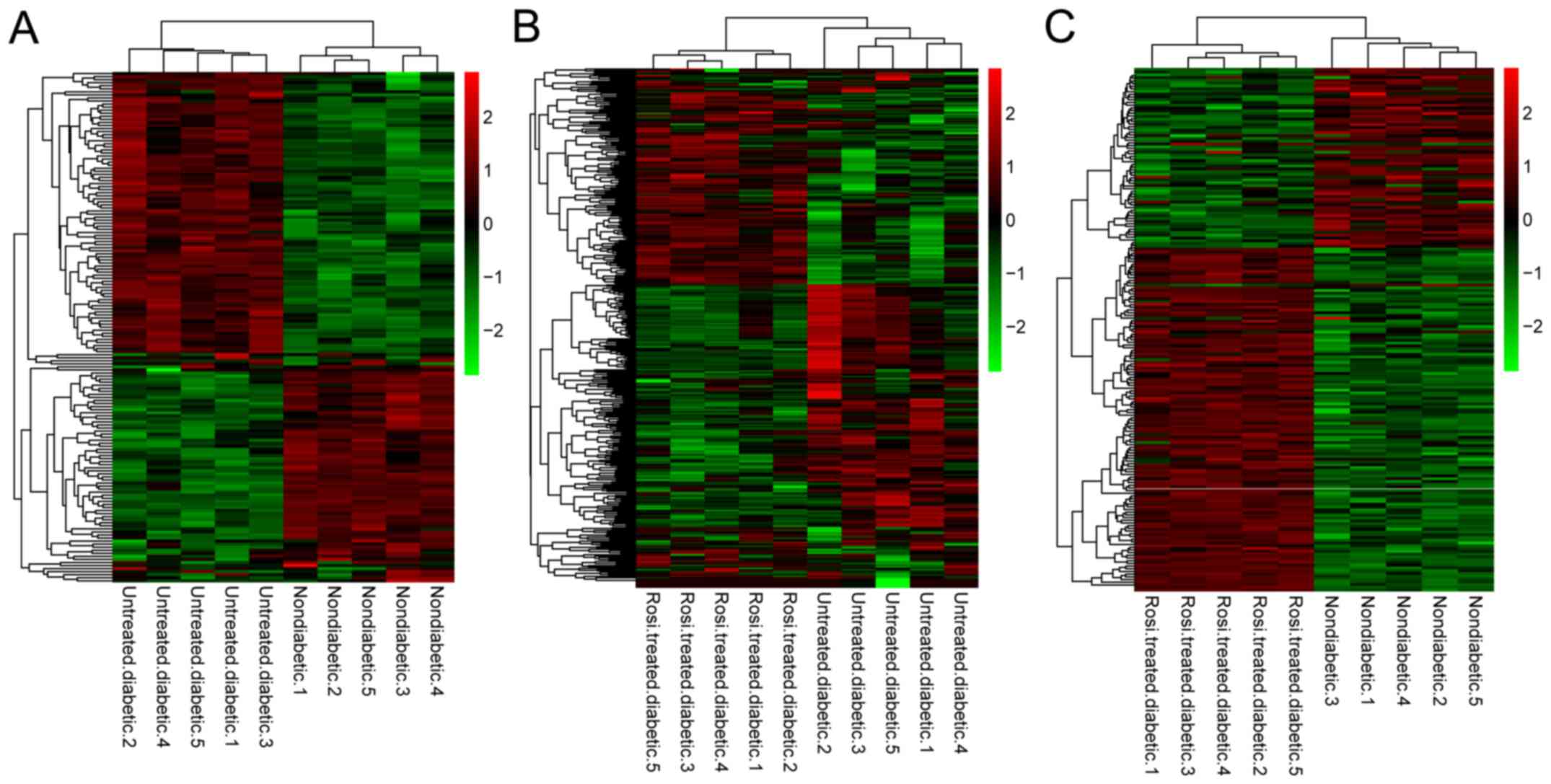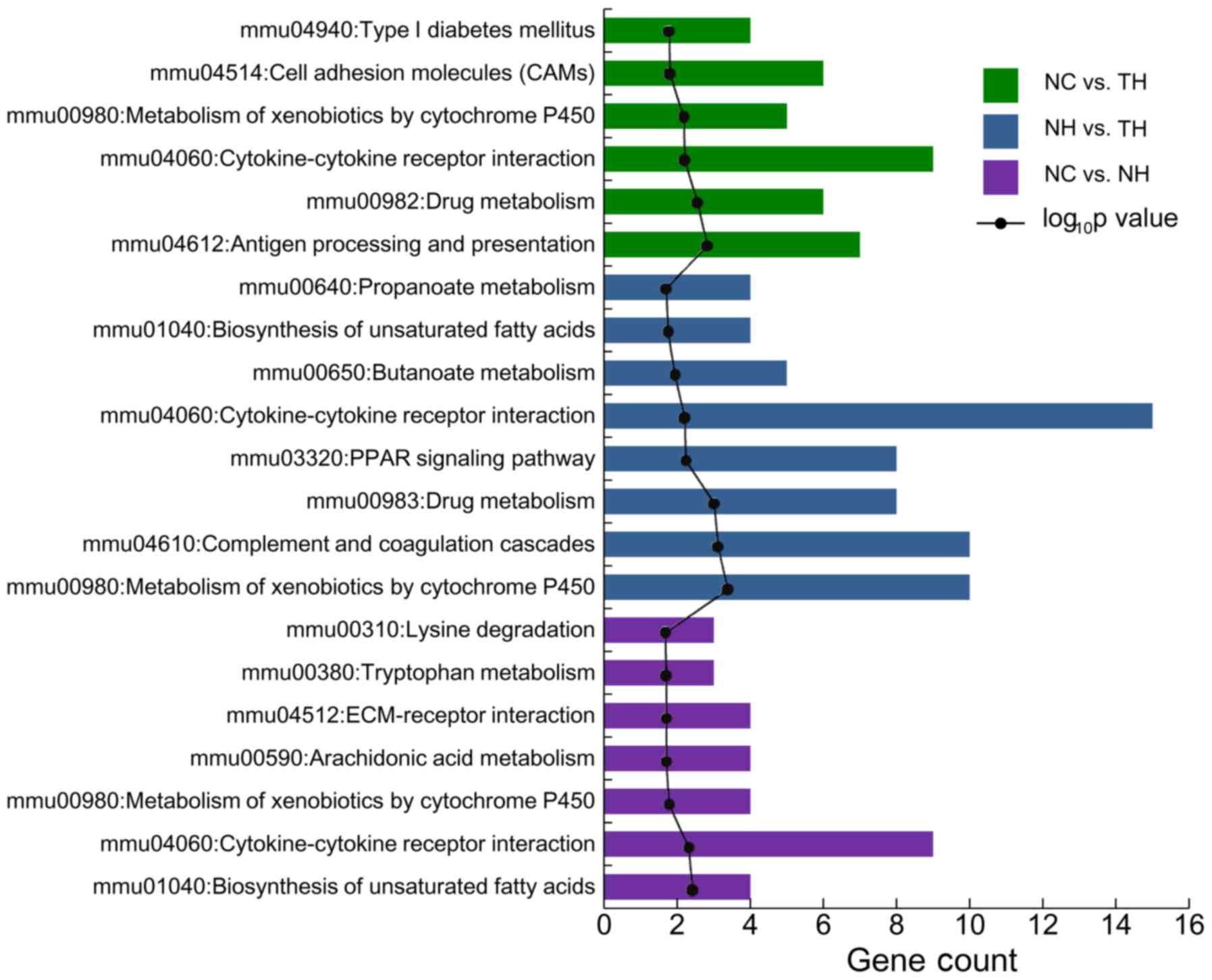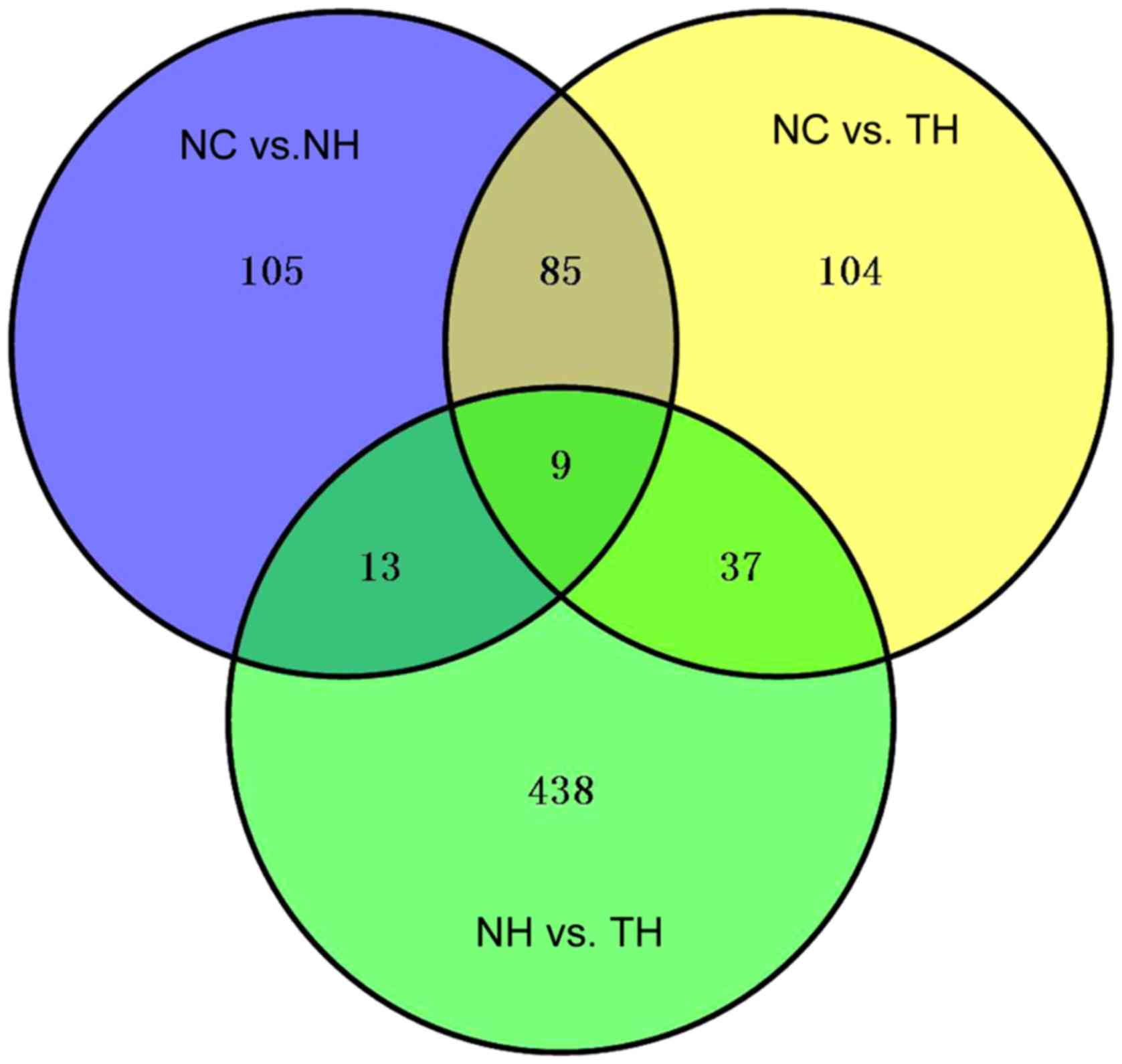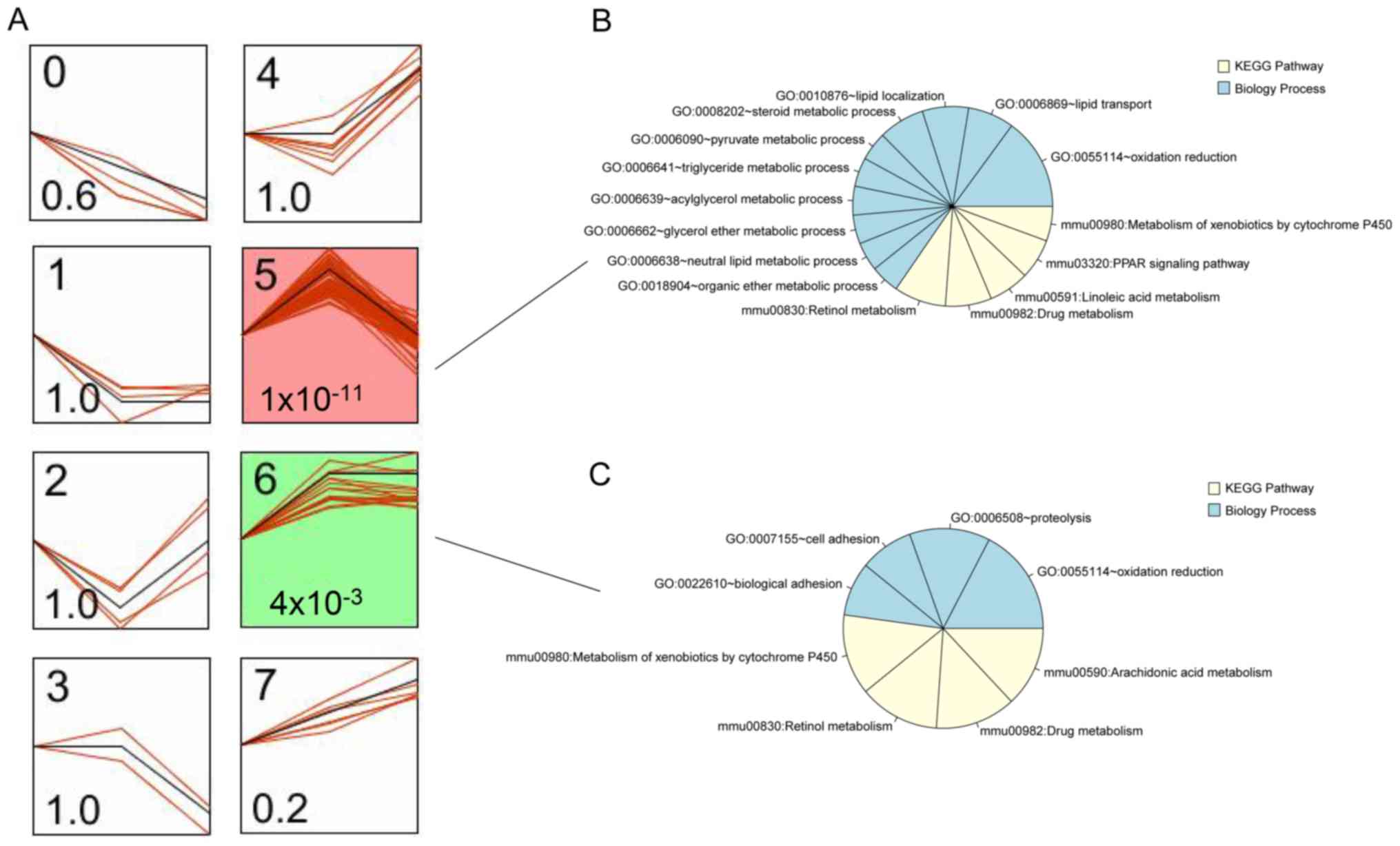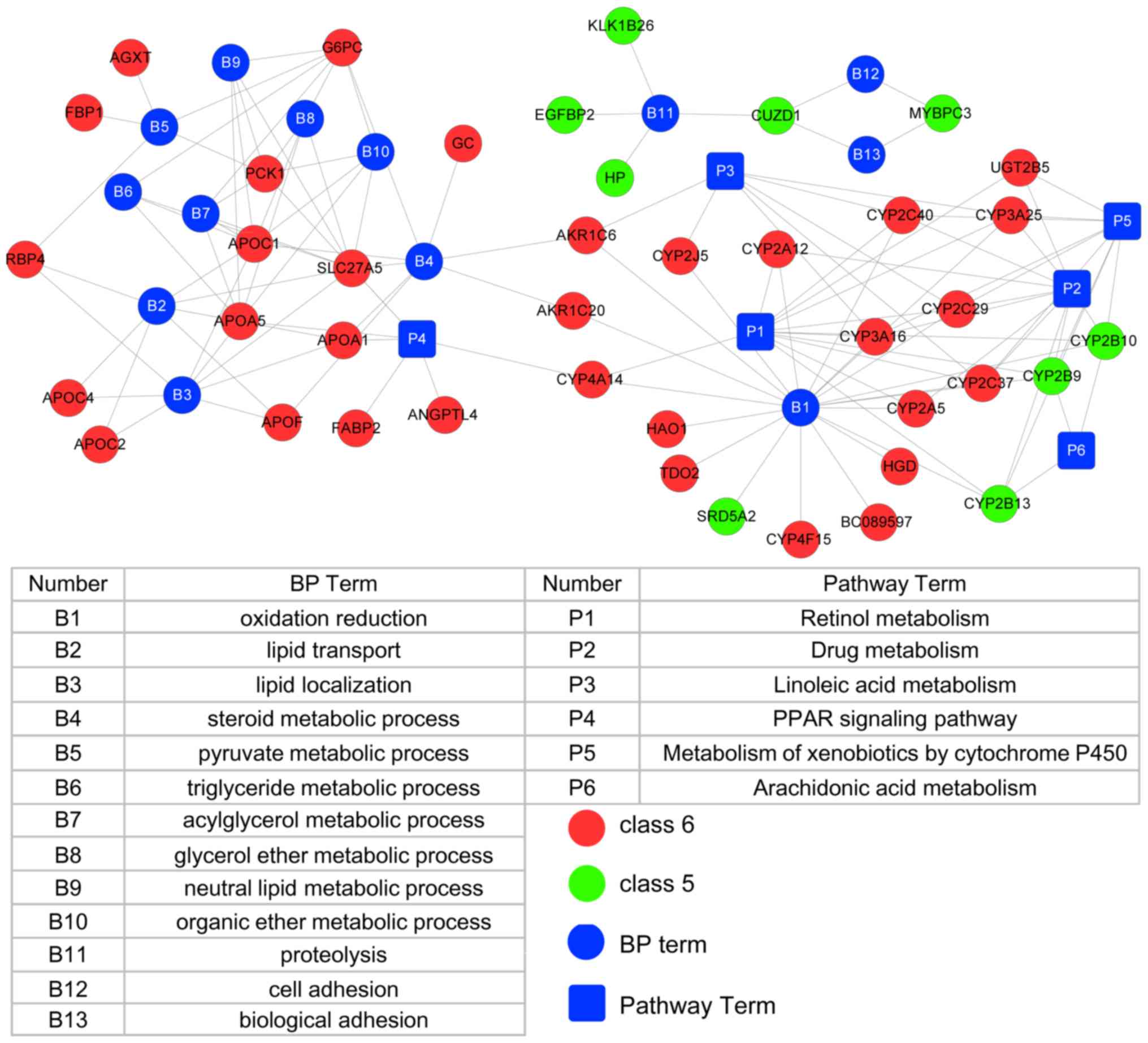|
1
|
Dall TM, Yang W, Halder P, Pang B,
Massoudi M, Wintfeld N, Semilla AP, Franz J and Hogan PF: The
economic burden of elevated blood glucose levels in 2012: Diagnosed
and undiagnosed diabetes, gestational diabetes mellitus, and
prediabetes. Diabetes Care. 37:3172–3179. 2014. View Article : Google Scholar : PubMed/NCBI
|
|
2
|
American Diabetes Association: Diagnosis
and classification of diabetes mellitus. Diabetes Care. 37 Suppl
1:S81–S90. 2014. View Article : Google Scholar : PubMed/NCBI
|
|
3
|
Cooper ME, White MF, Zick Y and Zimmet P:
Type 2 diabetes mellitus. https://www.nature.com/nrendo/posters/type2diabetesmellitus/index.htmlOctober.
2012
|
|
4
|
Cockram C: The epidemiology of diabetes
mellitus in the Asia-Pacific region. Hong Kong Med J. 6:43–52.
2000.PubMed/NCBI
|
|
5
|
Bazargan M, Foster DJR, Davey AK and
Muhlhausler BS: Rosiglitazone metabolism in human liver microsomes
using a substrate depletion method. Drugs R D. 17:189–198. 2017.
View Article : Google Scholar : PubMed/NCBI
|
|
6
|
Abou Daya K, Abu Daya H, Nasser Eddine M,
Nahhas G and Nuwayri-Salti N: Effects of rosiglitazone (PPAR γ
agonist) on the myocardium in non-hypertensive diabetic rats (PPAR
γ). J Diabetes. 7:85–94. 2015. View Article : Google Scholar : PubMed/NCBI
|
|
7
|
Mayerson AB, Hundal RS, Dufour S, Lebon V,
Befroy D, Cline GW, Enocksson S, Inzucchi SE, Shulman GI and
Petersen KF: The effects of rosiglitazone on insulin sensitivity,
lipolysis, and hepatic and skeletal muscle triglyceride content in
patients with type 2 diabetes. Diabetes. 51:797–802. 2002.
View Article : Google Scholar : PubMed/NCBI
|
|
8
|
Sundaresan A, Radhiga T and Pugalendi KV:
Effect of ursolic acid and Rosiglitazone combination on hepatic
lipid accumulation in high fat diet-fed C57BL/6J mice. Eur J
Pharmacol. 741:297–303. 2014. View Article : Google Scholar : PubMed/NCBI
|
|
9
|
Bajpeyi S, Pasarica M, Conley KE, Newcomer
BR, Jubrias SA, Gamboa C, Murray K, Sereda O, Sparks LM and Smith
SR: Pioglitazone-induced improvements in insulin sensitivity occur
without concomitant changes in muscle mitochondrial function.
Metabolism. 69:24–32. 2017. View Article : Google Scholar : PubMed/NCBI
|
|
10
|
Pedram A, Razandi M, Blumberg B and Levin
ER: Membrane and nuclear estrogen receptor α collaborate to
suppress adipogenesis but not triglyceride content. FASEB J.
30:230–240. 2016. View Article : Google Scholar : PubMed/NCBI
|
|
11
|
Nissen SE and Wolski K: Effect of
rosiglitazone on the risk of myocardial infarction and death from
cardiovascular causes. N Engl J Med. 356:2457–2471. 2007.
View Article : Google Scholar : PubMed/NCBI
|
|
12
|
Singh S, Loke YK and Furberg CD: Long-term
risk of cardiovascular events with rosiglitazone: A meta-analysis.
JAMA. 298:1189–1195. 2007. View Article : Google Scholar : PubMed/NCBI
|
|
13
|
Home PD, Pocock SJ, Beck-Nielsen H, Curtis
PS, Gomis R, Hanefeld M, Jones NP, Komajda M and McMurray JJ;
RECORD Study Team, : Rosiglitazone evaluated for cardiovascular
outcomes in oral agent combination therapy for type 2 diabetes
(RECORD): A multicentre, randomised, open-label trial. Lancet.
373:2125–2135. 2009. View Article : Google Scholar : PubMed/NCBI
|
|
14
|
Wilson KD, Li Z, Wagner R, Yue P, Tsao P,
Nestorova G, Huang M, Hirschberg DL, Yock PG, Quertermous T and Wu
JC: Transcriptome alteration in the diabetic heart by
rosiglitazone: Implications for cardiovascular mortality. PLoS One.
3:e26092008. View Article : Google Scholar : PubMed/NCBI
|
|
15
|
Rao Y, Lee Y, Jarjoura D, Ruppert AS, Liu
CG, Hsu JC and Hagan JP: A comparison of normalization techniques
for microRNA microarray data. Stat Appl Genet Mol Biol.
7:Article22. 2008. View Article : Google Scholar : PubMed/NCBI
|
|
16
|
Gentleman R, Carey V, Huber W, Irizarry R
and Dudoit S: Bioinformatics and computational biology solutions
using R and Bioconductor. Springer Science & Business Media.
2006.
|
|
17
|
Szekely GJ and Rizzo ML: Hierarchical
clustering via joint between-within distances: Extending Ward's
minimum variance method. J Classification. 22:151–183. 2005.
View Article : Google Scholar
|
|
18
|
Ernst J and Bar-Joseph Z: STEM: A tool for
the analysis of short time series gene expression data. BMC
Bioinformatics. 7:1912006. View Article : Google Scholar : PubMed/NCBI
|
|
19
|
Wang Z, Shang P, Li Q, Wang L, Chamba Y,
Zhang B, Zhang H and Wu C: iTRAQ-based proteomic analysis reveals
key proteins affecting muscle growth and lipid deposition in pigs.
Sci Rep. 7:467172017. View Article : Google Scholar : PubMed/NCBI
|
|
20
|
Duong PT, Collins HL, Nickel M, Lund-Katz
S, Rothblat GH and Phillips MC: Characterization of nascent HDL
particles and microparticles formed by ABCA1-mediated efflux of
cellular lipids to apoA-I. J Lipid Res. 47:832–843. 2006.
View Article : Google Scholar : PubMed/NCBI
|
|
21
|
Llaverias G, Rebollo A, Pou J,
Vázquez-Carrera M, Sánchez RM, Laguna JC and Alegret M: Effects of
rosiglitazone and atorvastatin on the expression of genes that
control cholesterol homeostasis in differentiating monocytes.
Biochem Pharmacol. 71:605–614. 2006. View Article : Google Scholar : PubMed/NCBI
|
|
22
|
Li C, Tu Y, Liu TR, Guo ZG, Xie D, Zhong
JK, Fan YZ and Lai WY: Rosiglitazone attenuates atherosclerosis and
increases high-density lipoprotein function in atherosclerotic
rabbits. Int J Mol Med. 35:715–723. 2015. View Article : Google Scholar : PubMed/NCBI
|
|
23
|
Jin X, Sviridov D, Liu Y, Vaisman B,
Addadi L, Remaley AT and Kruth HS: ABCA1 (ATP-binding cassette
transporter A1) mediates ApoA-I (Apolipoprotein A-I) and ApoA-I
mimetic peptide mobilization of extracellular cholesterol
microdomains deposited by macrophages. Arterioscler Thromb Vasc
Biol. 36:2283–2291. 2016. View Article : Google Scholar : PubMed/NCBI
|
|
24
|
Liu X, Ren K, Suo R, Xiong SL, Zhang QH,
Mo ZC, Tang ZL, Jiang Y, Peng XS and Yi GH: ApoA-I induces S1P
release from endothelial cells through ABCA1 and SR-BI in a
positive feedback manner. J Physiol Biochem. 72:657–667. 2016.
View Article : Google Scholar : PubMed/NCBI
|
|
25
|
Li D, Weng S, Yang B, Zander DS, Saldeen
T, Nichols WW, Khan S and Mehta JL: Inhibition of arterial thrombus
formation by ApoA1 Milano. Arterioscler Thromb Vasc Biol.
19:378–383. 1999. View Article : Google Scholar : PubMed/NCBI
|
|
26
|
Wang Y, Lu Z, Zhang J, Yang Y, Shen J,
Zhang X and Song Y: The APOA5 rs662799 polymorphism is associated
with dyslipidemia and the severity of coronary heart disease in
Chinese women. Lipids Health Dis. 15:1702016. View Article : Google Scholar : PubMed/NCBI
|
|
27
|
Oliva I, Guardiola M, Vallvé JC, Ibarretxe
D, Plana N, Masana L, Monk D and Ribalta J: APOA5 genetic and
epigenetic variability jointly regulate circulating triacylglycerol
levels. Clin Sci (Lond). 130:2053–2059. 2016. View Article : Google Scholar : PubMed/NCBI
|
|
28
|
Kershaw EE, Schupp M, Guan HP, Gardner NP,
Lazar MA and Flier JS: PPARgamma regulates adipose triglyceride
lipase in adipocytes in vitro and in vivo. Am J Physiol Endocrinol
Metab. 293:E1736–E1745. 2007. View Article : Google Scholar : PubMed/NCBI
|
|
29
|
Musunuru K: Atherogenic dyslipidemia:
Cardiovascular risk and dietary intervention. Lipids. 45:907–914.
2010. View Article : Google Scholar : PubMed/NCBI
|
|
30
|
Watson JD: Type 2 diabetes as a redox
disease. Lancet. 383:841–843. 2014. View Article : Google Scholar : PubMed/NCBI
|
|
31
|
Baldwin SJ, Clarke SE and Chenery RJ:
Characterization of the cytochrome P450 enzymes involved in the in
vitro metabolism of rosiglitazone. Br J Clin Pharmacol. 48:424–432.
1999. View Article : Google Scholar : PubMed/NCBI
|
|
32
|
Konno Y, Negishi M and Kodama S: The roles
of nuclear receptors CAR and PXR in hepatic energy metabolism. Drug
Metab Pharmacokinet. 23:8–13. 2008. View Article : Google Scholar : PubMed/NCBI
|
|
33
|
Kelder T, Verschuren L, van Ommen B, van
Gool AJ and Radonjic M: Network signatures link hepatic effects of
anti-diabetic interventions with systemic disease parameters. BMC
Syst Biol. 8:1082014. View Article : Google Scholar : PubMed/NCBI
|
|
34
|
Nelson DR, Zeldin DC, Hoffman SM, Maltais
LJ, Wain HM and Nebert DW: Comparison of cytochrome P450 (CYP)
genes from the mouse and human genomes, including nomenclature
recommendations for genes, pseudogenes and alternative-splice
variants. Pharmacogenetics. 14:1–18. 2004. View Article : Google Scholar : PubMed/NCBI
|
|
35
|
Ma B, Xiong X, Chen C, Li H, Xu X, Li X,
Li R, Chen G, Dackor RT, Zeldin DC and Wang DW: Cardiac-specific
overexpression of CYP2J2 attenuates diabetic cardiomyopathy in male
streptozotocin-induced diabetic mice. Endocrinology. 154:2843–2856.
2013. View Article : Google Scholar : PubMed/NCBI
|
|
36
|
Panunti B and Fonseca V: Effects of PPAR
gamma agonists on cardiovascular function in obese, non-diabetic
patients. Vascul Pharmacol. 45:29–35. 2006. View Article : Google Scholar : PubMed/NCBI
|
|
37
|
Castro MCD and Singer BH: Controlling the
false discovery rate: A new application to account for multiple and
dependent tests in local statistics of spatial association.
Geographical Anal. 38:180–208. 2006. View Article : Google Scholar
|















